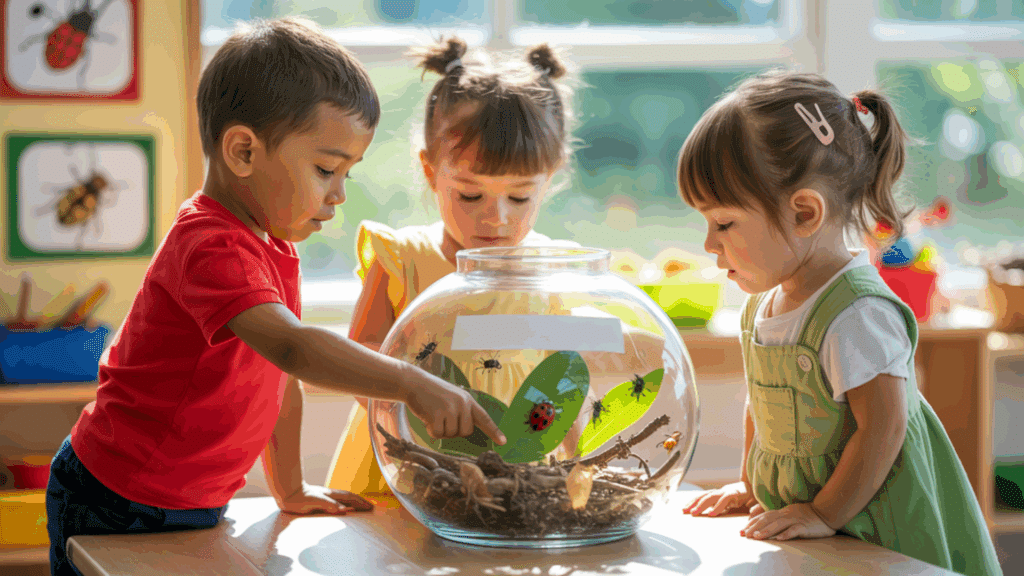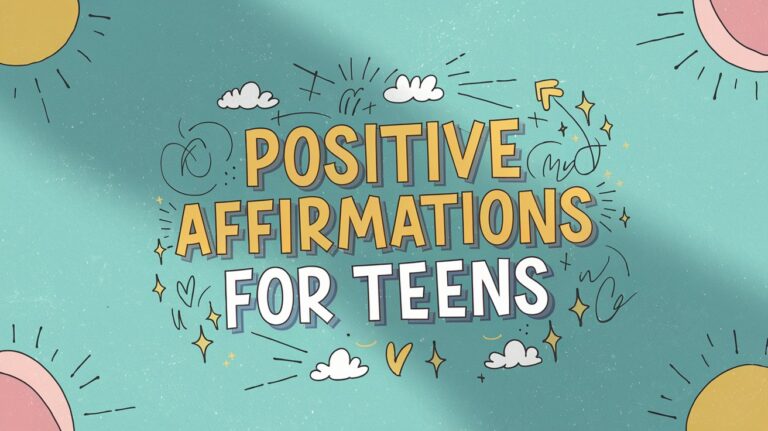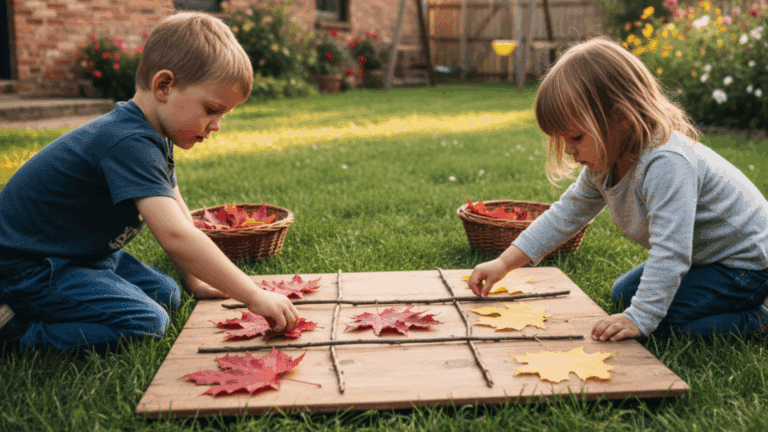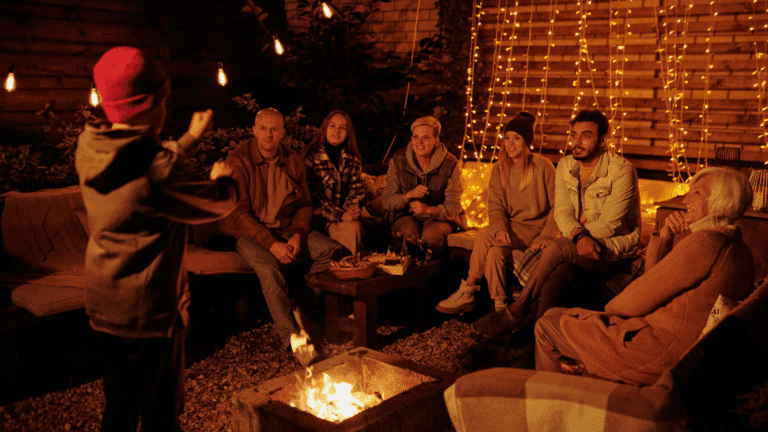Many preschool teachers struggle to find engaging activities that capture young children’s natural curiosity about the world around them.
Bugs often frighten children or get dismissed as creepy crawlers rather than interesting creatures worth studying.
These creative bug activities for preschoolers will change your classroom into an exciting learning laboratory where children find insects through experiential learning.
We’ll cover activities that cater to different learning styles and developmental levels. Every child will develop an appreciation for nature’s smallest creatures.
Importance of Bug Activities for Preschool Learning
Bug activities for preschoolers naturally spark curiosity and wonder about the world around them.
Young children are fascinated by small creatures that move, crawl, and fly. This interest creates perfect learning opportunities.
These activities develop essential skills in scientific thinking. Children learn to observe, compare, and ask questions about living things.
Most importantly, bug activities help children overcome fears and develop respect for nature. They learn that insects play essential roles in our environment. This understanding builds environmental awareness and responsibility for our natural world.
Fun Bug Activities for Preschoolers

These engaging activities combine art, science, and imaginative play to help young children find the interesting world of insects through hands-on learning experiences.
1. Bug Hunt Activity
Kids find the yard or classroom with magnifying glasses to find bugs in their natural habitat, encouraging observation, curiosity, and hands-on interaction with insects in a fun scavenger hunt format.
- Skills Learned: Observation, identification
- What You’ll Need: Bug boxes, magnifying glasses, printed bug list
- Difficulty Level: Easy
2. Insect Sensory Bin
A sensory bin filled with rice, beans, or dirt, along with plastic bugs, offers tactile findings while teaching insect names, colors, and textures. Great for open-ended play and fine motor development.
- Skills Learned: Sensory findings, vocabulary building
- What You’ll Need: Bin, filler materials, toy insects
- Difficulty Level: Easy
3. Ladybug Dot Painting
Preschoolers paint red ladybugs using cotton swabs or dot markers to place black dots on their wings, promoting counting and hand-eye coordination while learning about insect features in a colorful and creative way.
- Skills Learned: Fine motor skills, counting
- What You’ll Need: Dot markers, ladybug templates, red paper
- Difficulty Level: Medium
4. Build a Bug Hotel
Children stack and fill recycled materials, such as sticks, pinecones, and tubes, into a structure that mimics real bug habitats, promoting STEM concepts and insect appreciation through a simple building project.
- Skills Learned: Engineering, nature awareness
- What You’ll Need: Cardboard box, sticks, leaves, glue
- Difficulty Level: Medium
5. Caterpillar Counting Craft
Kids glue colored pom-poms or paper circles in a line to make a caterpillar, counting each piece aloud. This reinforces number recognition and sequencing through a cute insect-themed craft activity.
- Skills Learned: Counting, sequencing
- What You’ll Need: Glue, pom-poms, paper circles
- Difficulty Level: Easy
6. Butterfly Symmetry Art
Children fold the paper in half, add paint to one side, and then press to reveal symmetrical butterfly wings, an easy way to introduce symmetry while engaging their artistic creativity.
- Skills Learned: Symmetry, color blending
- What You’ll Need: Paper, paint, smocks
- Difficulty Level: Medium
7. Bug-Themed Yoga Poses
Introduce calming movement through fun, bug-inspired poses, such as the “Caterpillar Curl” or the “Butterfly Stretch.” This activity blends imaginative play with body awareness and mindfulness in a preschool-friendly way.
- Skills Learned: Balance, body awareness
- What You’ll Need: Yoga mat or carpet, open space
- Difficulty Level: Easy
8. Ant Trail Obstacle Course
Create a wiggly “ant trail” using tape or paper for kids to follow while crawling or walking on all fours, mimicking ants and building gross motor strength and coordination.
- Skills Learned: Gross motor control, spatial awareness
- What You’ll Need: Floor tape, cones, small obstacles
- Difficulty Level: Medium
9. Make Your Own Spider Web
Using yarn or string, kids weave their own spider webs on paper plates or cardboard, building fine motor dexterity while discussing the purpose and pattern of spider webs.
- Skills Learned: Hand-eye coordination, creativity
- What You’ll Need: Yarn, paper plates, tape
- Difficulty Level: Medium
10. Firefly Glow Jar
Create glowing jars with glow sticks or LED lights and tissue paper to mimic the appearance of fireflies in a jar. This craft introduces light and insect behavior while inspiring nighttime curiosity.
- Skills Learned: Light observation, crafting
- What You’ll Need: Clear jar, glow sticks, tissue paper
- Difficulty Level: Easy
11. Bug Shadow Matching
Children match printed bug shapes to their shadows on cards, improving visual discrimination and shape recognition. It’s a quiet tabletop activity perfect for centers or one-on-one learning.
- Skills Learned: Visual perception, matching
- What You’ll Need: Shadow cards, bug silhouette cutouts
- Difficulty Level: Easy
12. Insect Life Cycle Puzzle
Preschoolers arrange puzzle pieces that illustrate the stages of insect life cycles, including egg, larva, pupa, and adult. It builds sequencing and science vocabulary in a hands-on, age-appropriate format.
- Skills Learned: Sequencing, science understanding
- What You’ll Need: Printed puzzles, images, scissors
- Difficulty Level: Medium
13. Grasshopper Jump Game
Kids jump like grasshoppers along a line of mats, shapes, or lily pads placed on the floor. It’s a fun energy outlet and a simple intro to insect locomotion.
- Skills Learned: Jumping, rhythm, and movement
- What You’ll Need: Foam mats, lily pad cutouts
- Difficulty Level: Easy
14. Bee Pollination Relay
Children use cotton balls or pom-poms to mimic bees pollinating flowers. This relay race introduces the basics of pollination while encouraging teamwork, speed, and coordination in an exciting format.
- Skills Learned: Coordination, science awareness
- What You’ll Need: Cotton balls, fake flowers, baskets
- Difficulty Level: Medium
15. Worm Findings Tray
Using plastic worms or cooked spaghetti, preschoolers find texture, digging through dirt-like materials. It’s a perfect sensory experience for bug lovers interested in what’s beneath the soil.
- Skills Learned: Sensory findings, fine motor skills
- What You’ll Need: Tray, spaghetti or toy worms, soil substitute
- Difficulty Level: Easy
16. Bug Scavenger Hunt Bingo
Each child gets a bingo card with different bugs to find outdoors or around the room. They mark off matches, promoting focus and insect identification through active play.
- Skills Learned: Visual matching, focus
- What You’ll Need: Bingo cards, markers, bug visuals
- Difficulty Level: Easy
17. Insect Sticker Storytime
Kids create mini storybooks using insect stickers and draw accompanying scenes, building narrative skills while expanding their insect vocabulary in a creative and personalized format.
- Skills Learned: Storytelling, vocabulary
- What You’ll Need: Insect stickers, paper booklets, crayons
- Difficulty Level: Medium
18. Beetle Rock Painting
Children paint rocks to resemble beetles with bright colors and spots, fostering creativity while learning beetle traits and practicing precision and brush control.
- Skills Learned: Painting, observation
- What You’ll Need: Smooth rocks, paint, paintbrushes
- Difficulty Level: Medium
19. Butterfly Dance and Freeze
Play music as kids flap like butterflies, freezing when it stops. It’s perfect for indoor movement breaks, body control practice, and imaginative play, all in one energetic activity.
- Skills Learned: Motor planning, listening skills
- What You’ll Need: Music player, open play space
- Difficulty Level: Easy
20. Bug Fossil Playdough Prints
Children press toy bugs into playdough to make “fossils,” discussing textures and the science of impressions while strengthening their hand muscles during sensory-based learning.
- Skills Learned: Imprinting, tactile learning
- What You’ll Need: Playdough, plastic bugs, a tray
- Difficulty Level: Easy
21. Backyard Bug Observation Journal
Children draw or write about the bugs they see outside in their journals, fostering daily observation skills, early writing, and a respect for nature reflectively and engagingly.
- Skills Learned: Observation, documentation
- What You’ll Need: Journals, pencils, magnifying glasses
- Difficulty Level: Medium
22. Dragonfly Wind Catchers
Children craft dragonflies using translucent materials, such as cellophane or tissue paper, and attach them to sticks to catch the wind. These decorations flutter outdoors while teaching kids about insect wings and air movement.
- Skills Learned: Crafting, understanding wind, and motion
- What You’ll Need: Tissue paper, craft sticks, glue
- Difficulty Level: Medium
23. Moth Wing Color Mixing
Preschoolers find color mixing by painting moth wings with primary colors that blend into new shades. This creative process introduces moths while reinforcing early science and visual art concepts.
- Skills Learned: Color recognition, early science
- What You’ll Need: Paint, paper, moth templates, brushes
- Difficulty Level: Medium
24. Bug-Themed Counting Hopscotch
A hopscotch grid decorated with numbered bugs encourages physical play and math learning. Children jump from one number to the next while counting aloud, combining movement with numerical recognition.
- Skills Learned: Counting, gross motor skills
- What You’ll Need: Sidewalk chalk, number cards, bug stickers
- Difficulty Level: Easy
25. Insect Habitat Sorting Game
Children match different toy insects to cards showing their correct habitats, such as soil, trees, or water, teaching basic ecology concepts and strengthening categorization skills through hands-on matching and discussion.
- Skills Learned: Sorting, science categorization
- What You’ll Need: Habitat cards, toy insects, baskets
- Difficulty Level: Medium
26. Praying Mantis Paper Puppets
Using green paper and folded shapes, kids make praying mantis puppets they can animate. This fun craft helps build fine motor control while introducing a predatory insect.
- Skills Learned: Fine motor skills, insect anatomy
- What You’ll Need: Green paper, googly eyes, glue
- Difficulty Level: Medium
27. Bug Song and Rhyme Circle
Sing catchy bug songs and rhymes in a group circle, accompanied by actions that match. This boosts memory, rhythm, and early language development while celebrating bugs through music and repetition.
- Skills Learned: Language development, rhythm
- What You’ll Need: Song lyrics, music player, hand motions
- Difficulty Level: Easy
28. Glow-in-the-Dark Bug Hunt
Kids search for glowing plastic bugs in a dim or dark room using flashlights or glow sticks. This exciting nighttime activity combines sensory findings with an imaginative bug-themed adventure.
- Skills Learned: Visual tracking, sensory play
- What You’ll Need: Glow bugs, flashlight, darkened space
- Difficulty Level: Medium
29. Bug-Themed Sensory Bottles
Fill clear bottles with glitter, water, and plastic insects to create calming sensory jars. Children shake and observe as bugs float around, supporting focus, calm, and visual tracking.
- Skills Learned: Sensory regulation, observation
- What You’ll Need: Bottles, glitter, plastic bugs, water
- Difficulty Level: Easy
30. Make a Bug Mask
Preschoolers design bug masks using paper plates, pipe cleaners, and paint. They change into butterflies, beetles, or bees while practicing creativity and role-playing their favorite crawling critters.
- Skills Learned: Imaginative play, creativity
- What You’ll Need: Paper plates, markers, pipe cleaners
- Difficulty Level: Medium
31. Centipede Ribbon Crawl
Create a long centipede using ribbon or fabric segments for children to crawl under or through, promoting active movement and coordination while pretending to move like multi-legged insects.
- Skills Learned: Body coordination, active play
- What You’ll Need: Ribbon strips, chairs, open space
- Difficulty Level: Easy
Tips for a Successful Bug Activity Session

Creating engaging bug activities requires careful planning and preparation to ensure all children feel comfortable and excited about learning.
- Start with familiar, friendly bugs: Begin with butterflies, ladybugs, or caterpillars before introducing spiders or beetles.
- Address fears early: Acknowledge that some children might feel scared and provide reassurance about bug safety.
- Set clear safety rules: Establish guidelines about touching bugs, staying with the group, and handling them gently.
- Include quiet observation time: Balance active searching with calm watching to accommodate different energy levels.
- Keep sessions short and focused: Limit activities to 15-20 minutes to match preschoolers’ attention spans.
Conclusion
Bug activities for preschoolers change ordinary classroom time into an extraordinary learning experience that children remember long after the lesson ends.
These experiences build scientific thinking, language skills, and environmental awareness through natural curiosity and hands-on findings.
The activities and strategies shared here offer teachers practical tools for creating effective bug-themed learning sessions. These meaningful experiences help children develop a lifelong appreciation for nature’s incredible diversity.


















